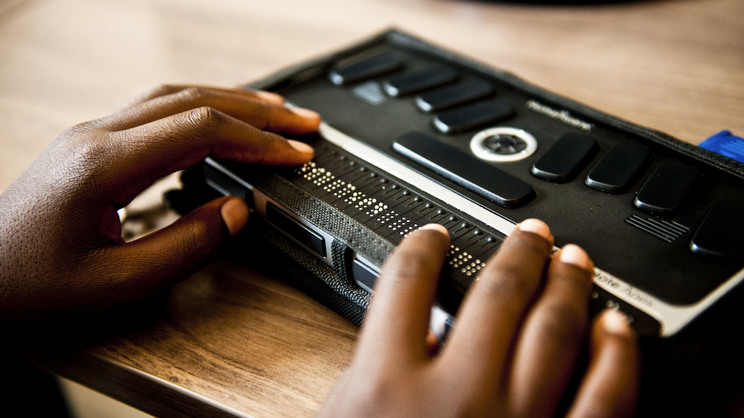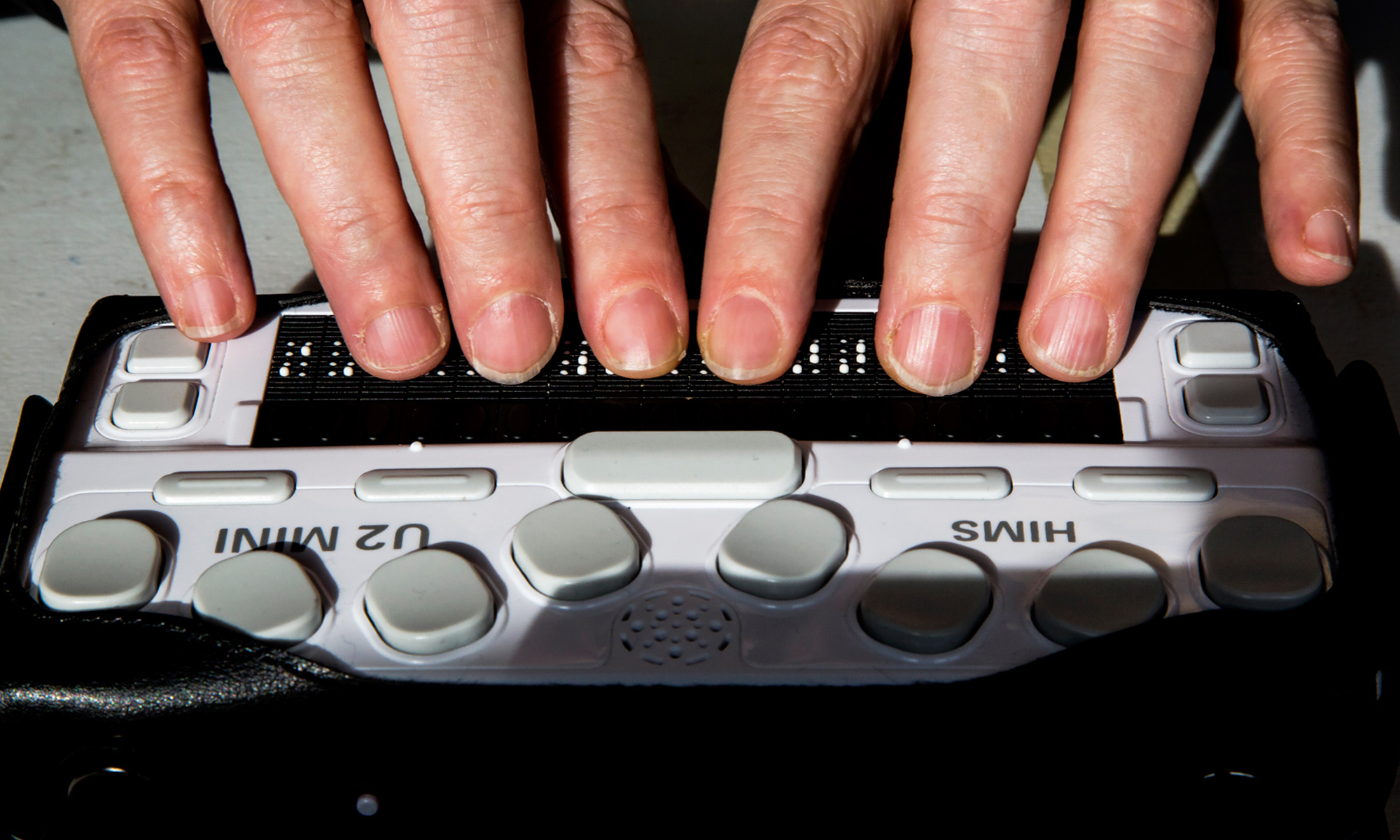OCR Devices for the Blind: Converting Print to Speech in Real-Time
OCR Devices for the Blind: Converting Print to Speech in Real-Time
Blog Article
Empowering Self-reliance With Assistive Innovation for the Blind
The integration of assistive innovation right into the lives of people with visual impairments represents a considerable advancement in advertising freedom and self-sufficiency. From cutting-edge screen readers to advanced clever walking sticks, these tools not just improve day-to-day navigation and communication however additionally equip customers to involve meaningfully in different facets of life. As we discover the myriad benefits and real-world applications of these technologies, it becomes critical to take a look at the hidden aspects that add to their efficiency and the capacity for future advancements in this important field.
Overview of Assistive Technology
The growth of assistive modern technology is based in concepts of inclusivity and empowerment. Technologies in software program, equipment, and sensory improvements give customers with alternatives customized to their certain requirements. From screen visitors that convert text to speech, to tactile gadgets that communicate information through touch, these devices change the means people engage with their surroundings.
Along with practical applications, assistive modern technology cultivates higher social addition and participation in numerous fields, consisting of education and work (Voice-activated assistive devices). As research study and development proceed to progress, the potential for assistive modern technology to additionally enhance the lives of aesthetically impaired people stays promising, leading the way for an extra equitable culture where everyone can grow
Sorts Of Assistive Devices
A range of assistive devices have actually arised to sustain people with visual problems, each developed to fulfill certain demands and improve day-to-day functioning. These tools vary from low-tech services to modern developments, providing diverse choices for customers.
Low-tech gadgets consist of magnifiers and large-print materials that help in analysis and writing. Braille tools, such as Braille slates and stylus pens, enable tactile analysis and communication. Positioning and flexibility aids, like white walking sticks, aid users navigate their atmosphere securely.
On the higher end of the spectrum, electronic zoom systems and display readers provide significant assistance. Electronic magnifiers allow individuals to increase the size of message and images on screens, while screen visitors transform electronic content into synthesized speech, assisting in accessibility to details on mobile phones and computer systems.
Smart device applications additionally play a critical role, offering functions like text acknowledgment and navigating help. Wearable modern technology, such as clever glasses outfitted with augmented reality, is becoming a promising tool to enhance situational awareness.
Benefits of Assistive Technology
The integration of assistive technology substantially enhances the lifestyle for individuals with visual impairments. These technologies empower individuals by promoting independence, enabling them to navigate their atmospheres better and carry out daily tasks with better convenience. Screen readers and magnifying software application allow people to gain access to digital details, promoting expert and educational possibilities that may have formerly been out of reach.
Additionally, assistive devices such as clever canes and general practitioners applications supply real-time navigation help, enhancing flexibility and security. This increased freedom not only enhances self-esteem however also motivates social engagement, enabling customers to take part even more fully in their neighborhoods.
Assistive technology likewise facilitates communication, aiding users get in touch with others through voice recognition and text-to-speech applications. This capacity is important for preserving partnerships and accessing important details.
Furthermore, the modification options offered with several assistive technologies guarantee that customers can tailor devices to their certain demands, additionally improving usability and effectiveness. On the whole, the advantages of assistive modern technology for individuals with visual disabilities are extensive, advertising an extra inclusive society where everybody can seek their aspirations and goals.
Case Researches and Success Stories
Highlighting the transformative influence of assistive innovation, various case researches show how people with aesthetic impairments have actually effectively integrated these devices right into their day-to-days live. One engaging example involves an university trainee that used screen analysis software application to browse scholastic materials and on the internet resources efficiently. This technology not just facilitated her education and learning but additionally improved her self-confidence in joining conversations and group tasks.
One more instance study includes a professional that employs a mobile phone application designed for navigating and object recognition. By utilizing this app, he has reclaimed autonomy in both his individual and work atmospheres, permitting him to commute separately and involve with colleagues a lot more effectively.
Furthermore, a senior citizen shared her experience with braille e-readers, which enabled her to access a large variety of literature and stay linked with her community through book clubs.
These success tales emphasize the vital role of assistive technology in fostering self-reliance, boosting quality of life, and promoting social combination for people with aesthetic impairments (Voice-activated assistive devices). By welcoming these innovative tools, users can conquer difficulties and take possibilities that add to their specialist and individual gratification

Future Fads in Assistive Innovation
Technology in assistive innovation is positioned to redefine the landscape of support for individuals with aesthetic impairments. Emerging fads emphasize the combination of expert system (AI) and maker learning, which improve the capability of devices that help with navigating and details ease of access. AI-driven applications are now capable of translating aesthetic information in real-time, making it possible for customers to engage with their environment much more separately.
Moreover, the growth of wearable innovation is advancing rapidly. Smart glasses furnished with augmented fact (AR) can give audio summaries of surroundings, transforming how customers connect with public areas. These gadgets not only advertise freedom however also foster social incorporation.
In Addition, the Web of Things (IoT) is making homes smarter, permitting smooth connectivity in between day-to-day home appliances and assistive devices. This connection equips users by making it possible for automated actions and voice-activated controls tailored to specific requirements.
Conclusion
In verdict, assistive technology plays a crucial function in empowering people with visual disabilities by enhancing their freedom and engagement with their environments. The diverse range of applications and devices offered not just helps with navigation and interaction but likewise advertises social integration and possibilities for specialist and personal development. As advancements continue in this area, the potential for enhancing the top AI-powered visual aids quality of life for those with visual disabilities will certainly expand, promoting better autonomy and empowerment.

Report this page